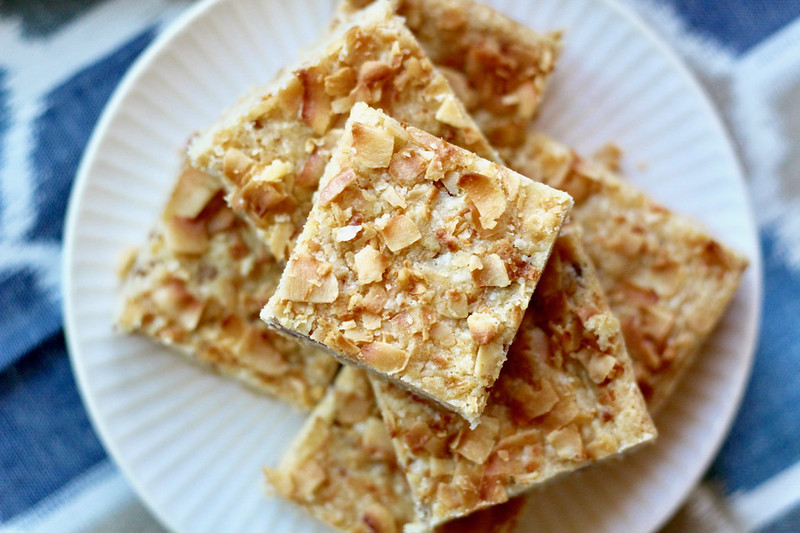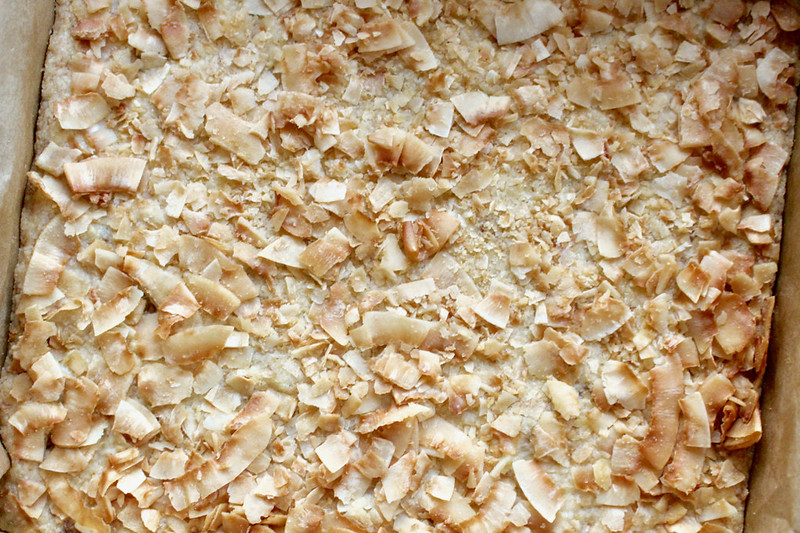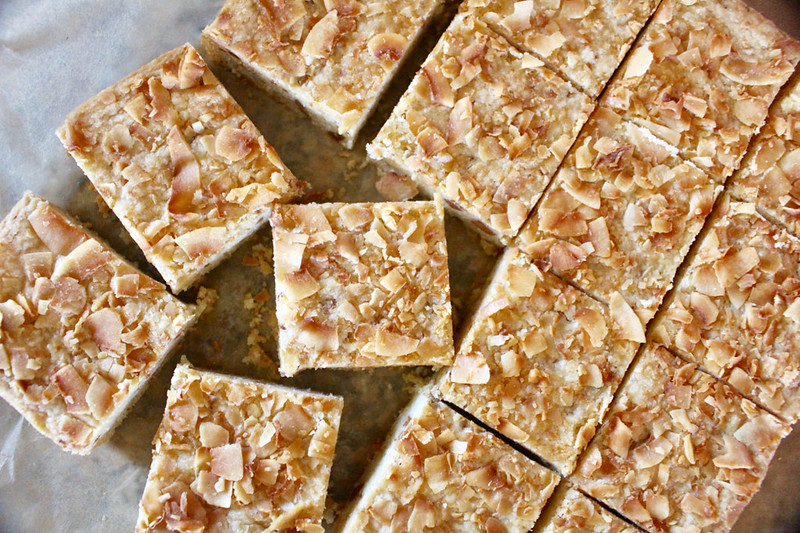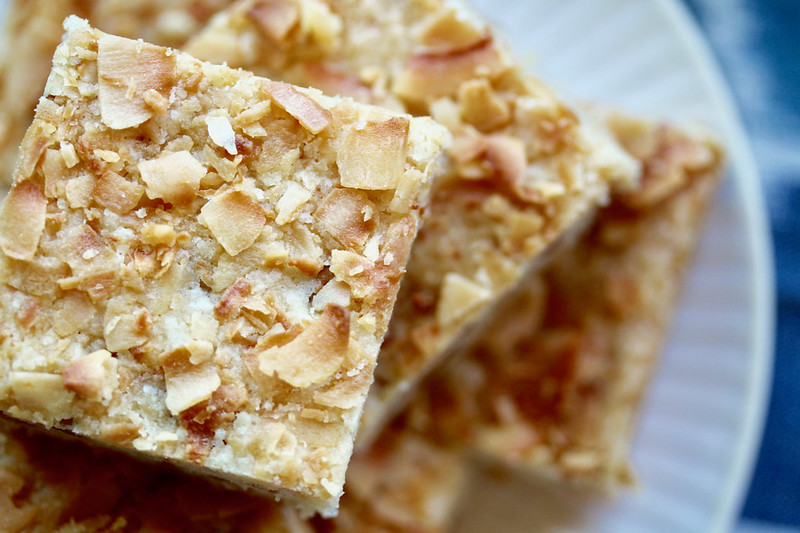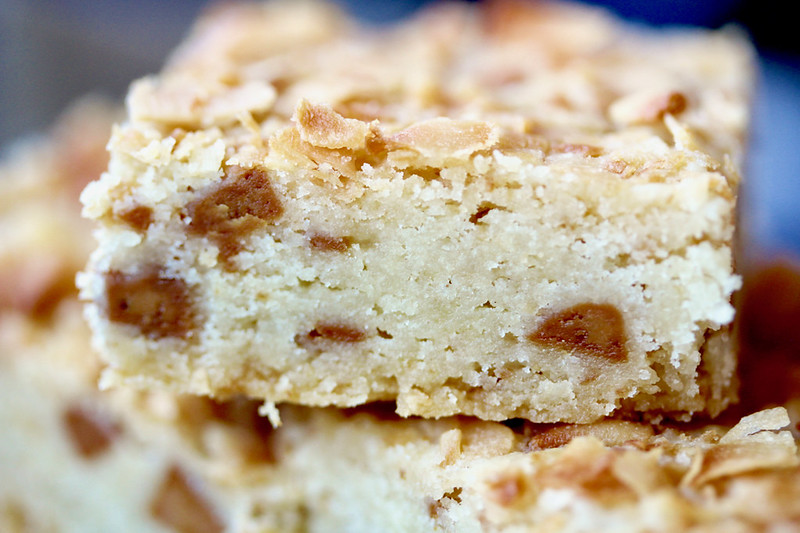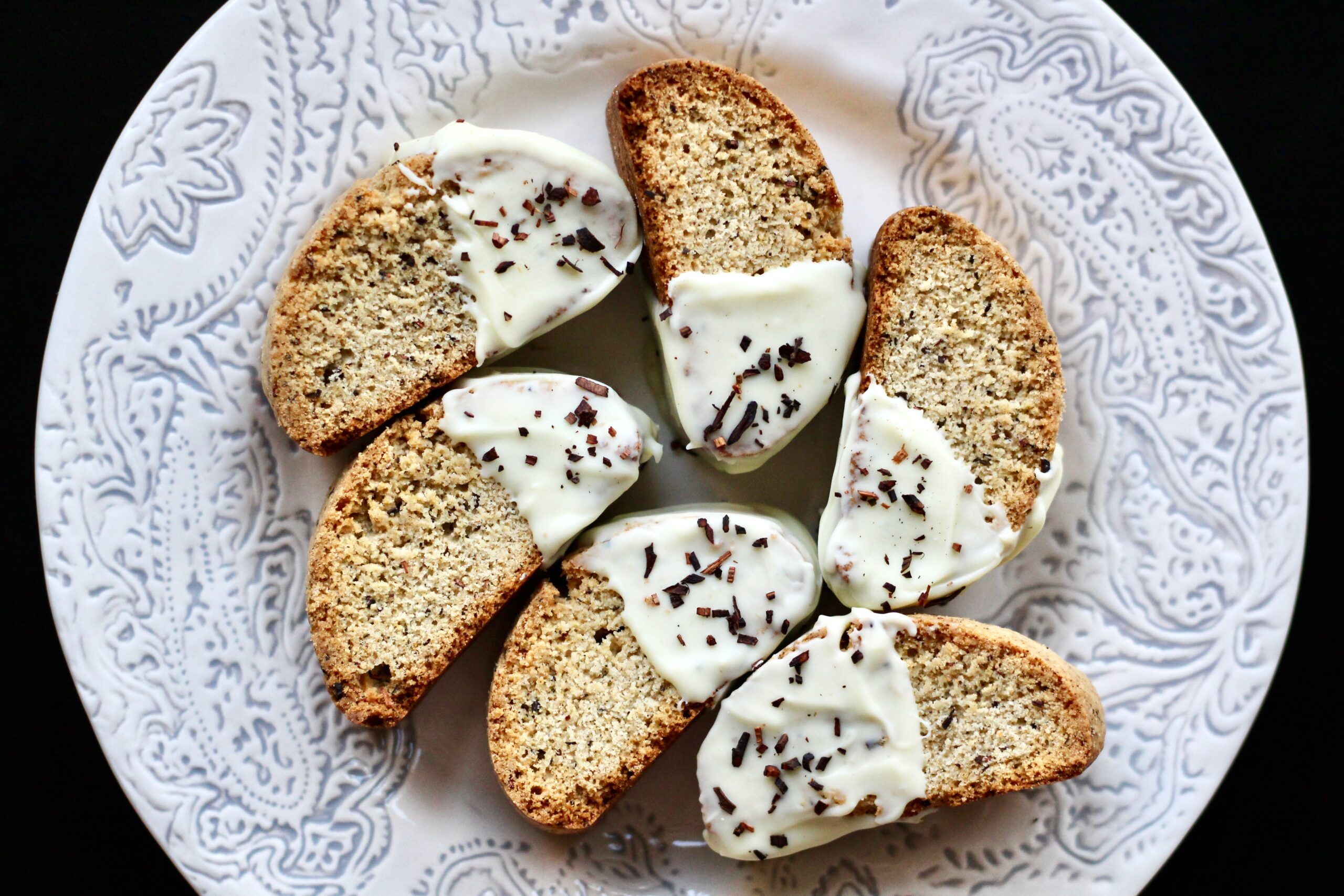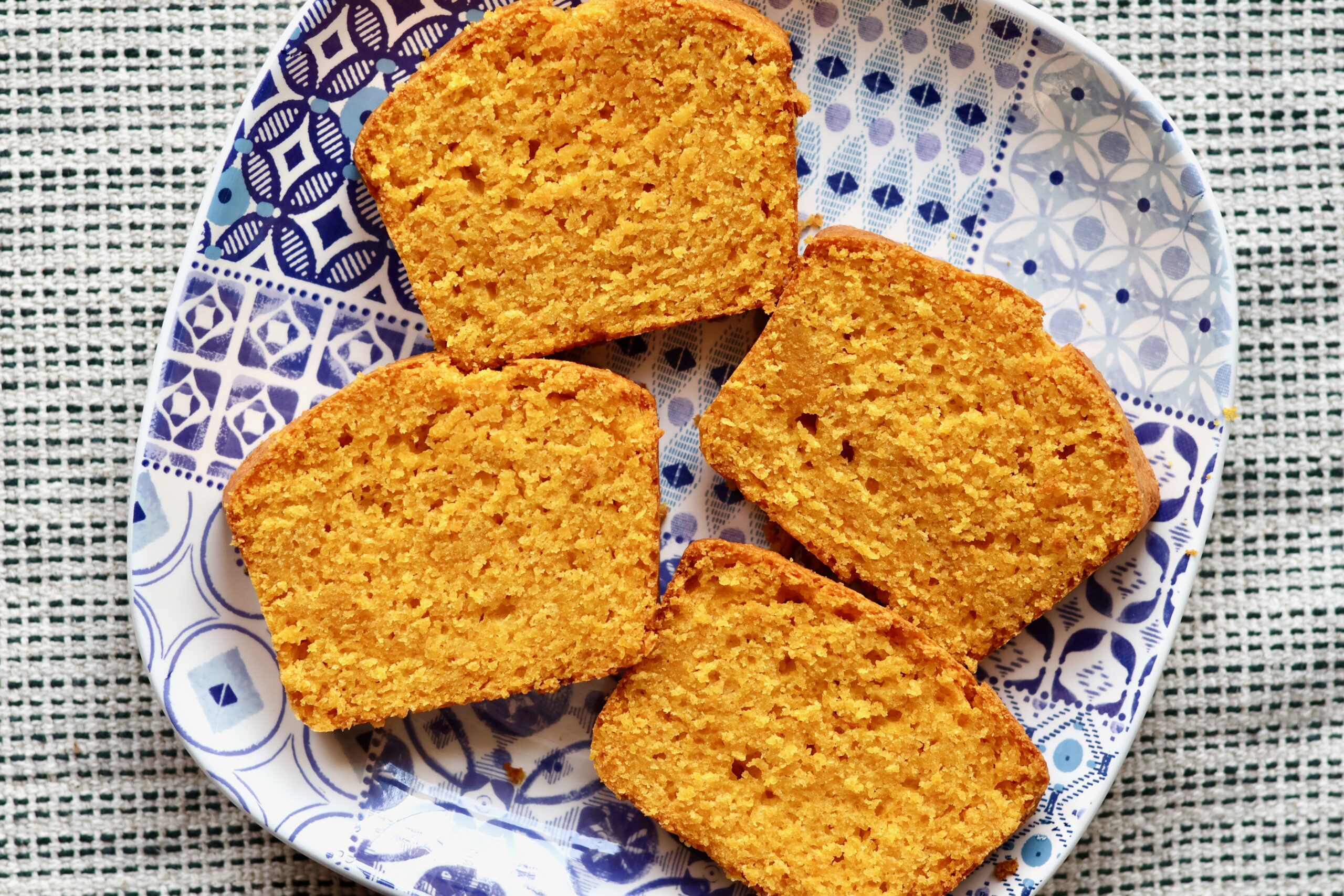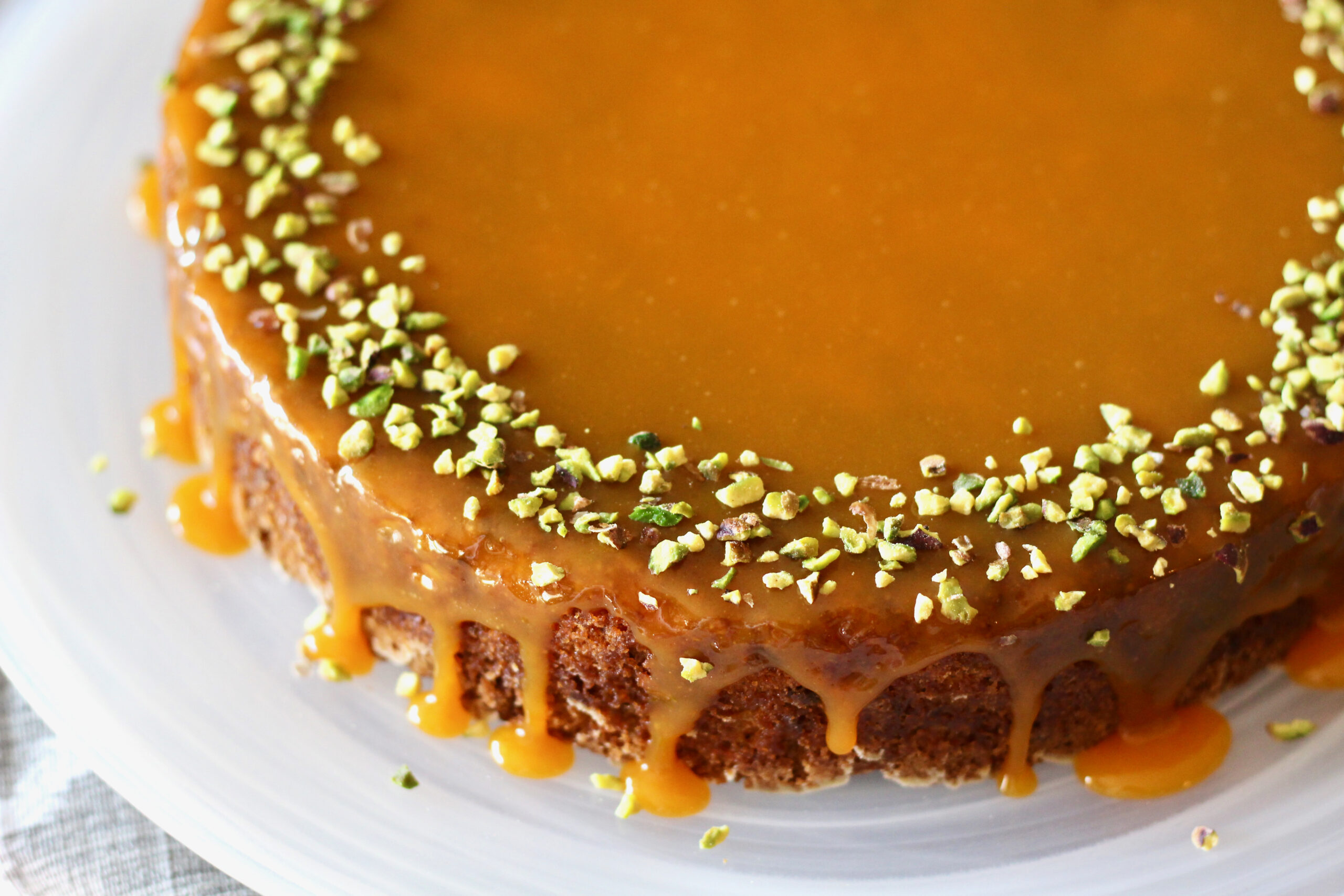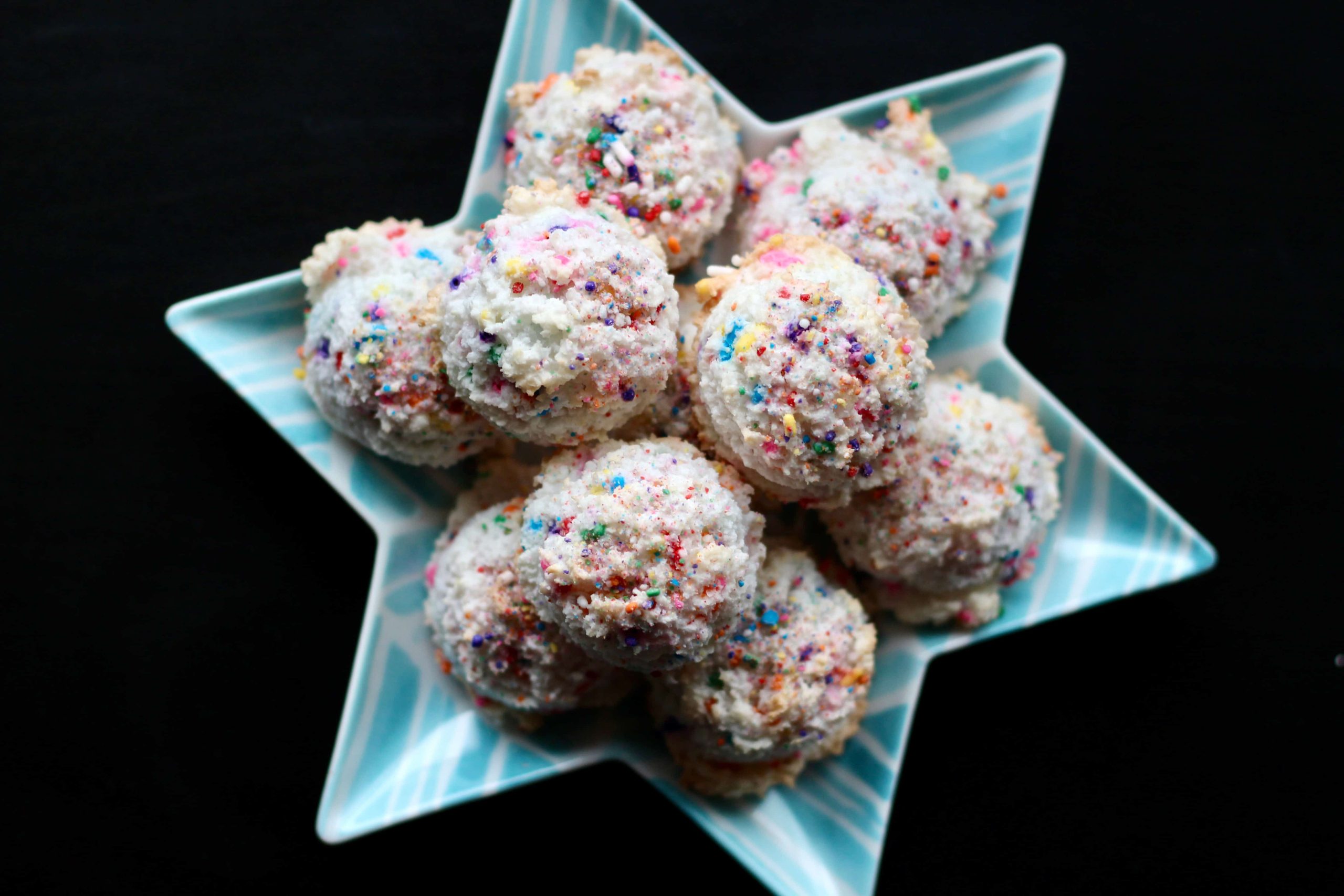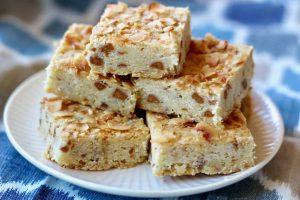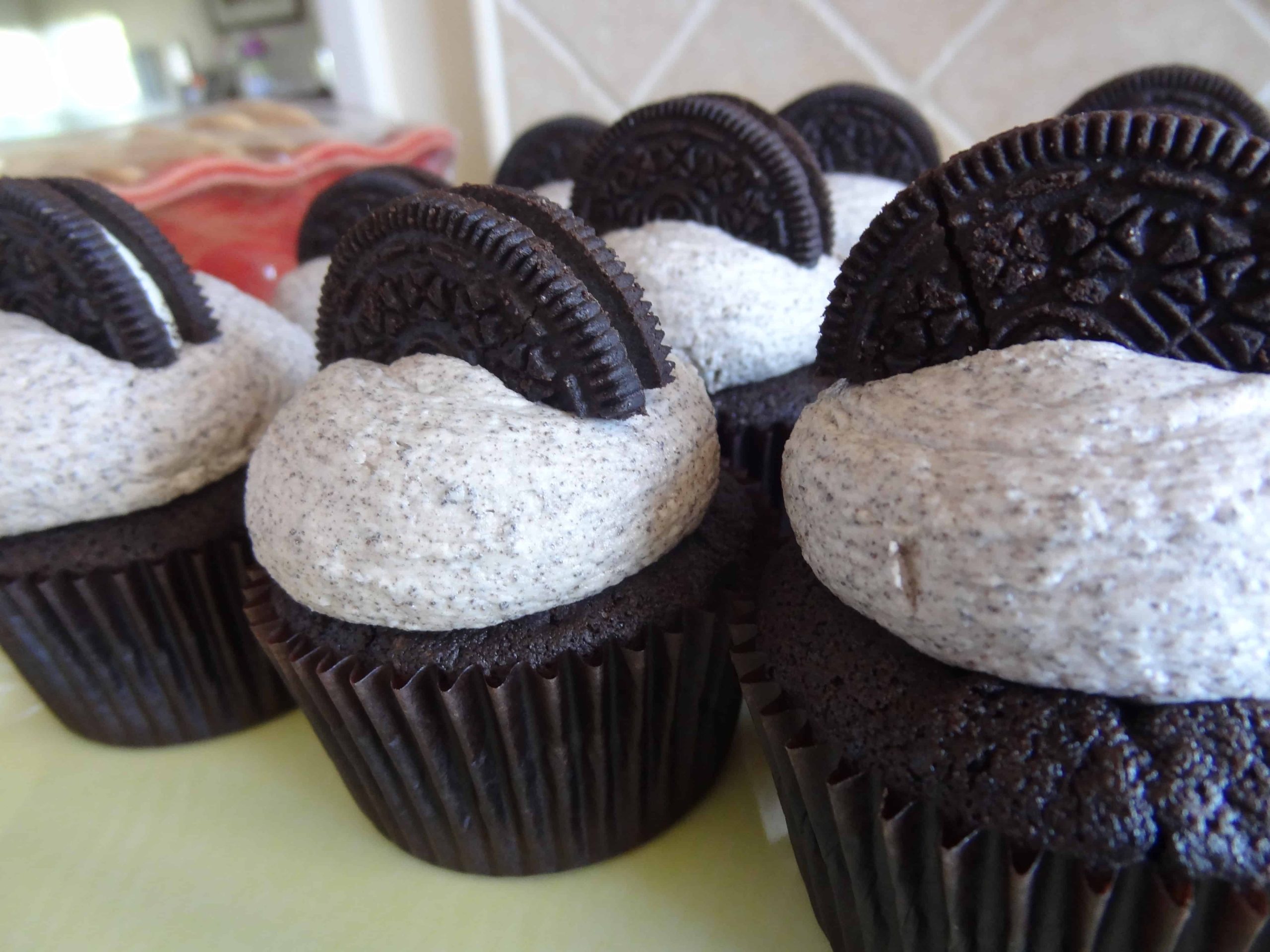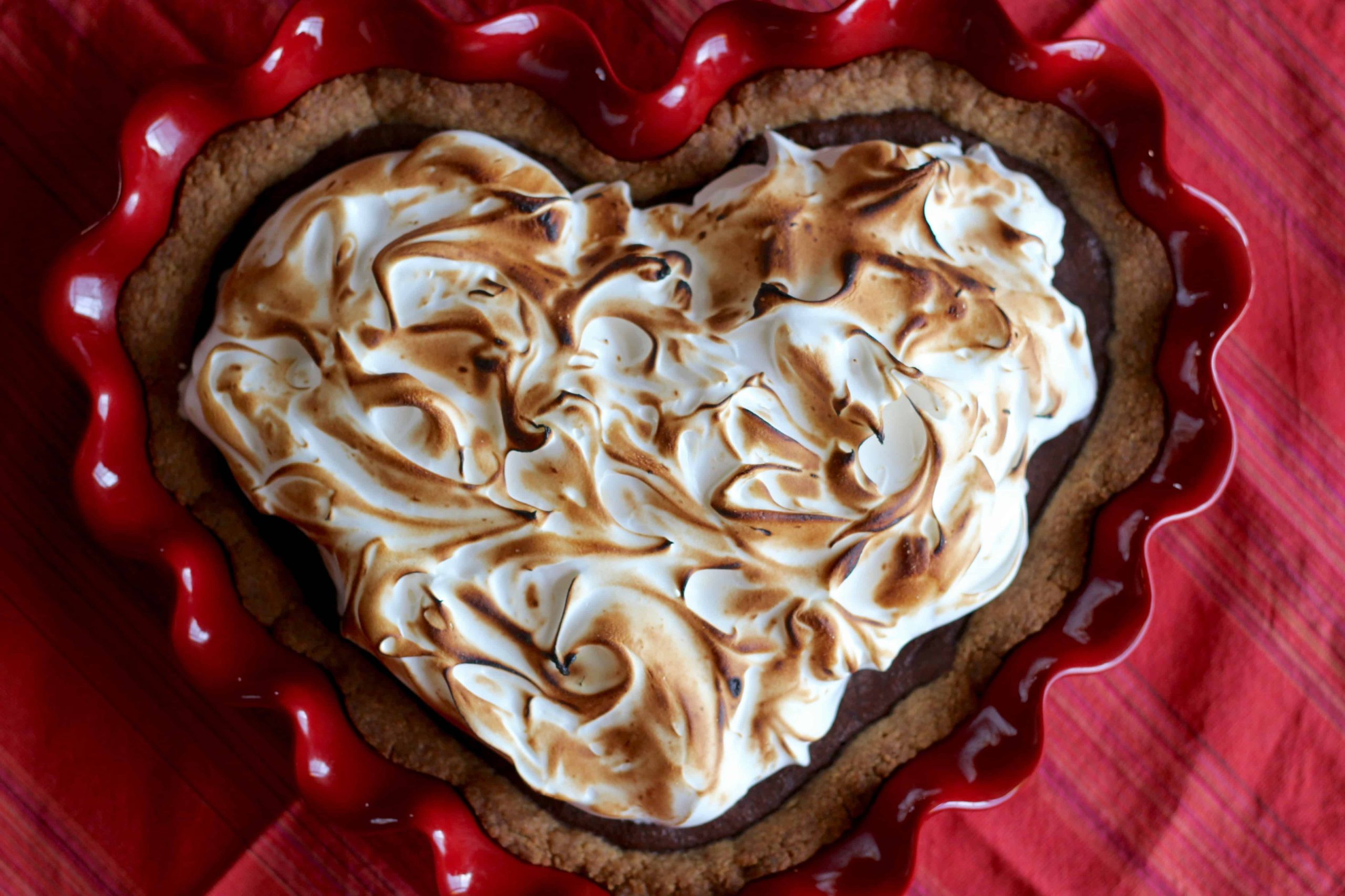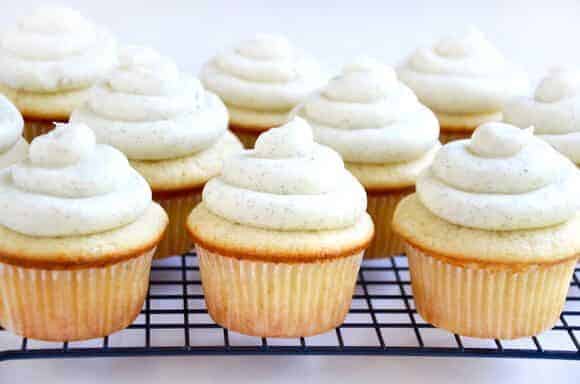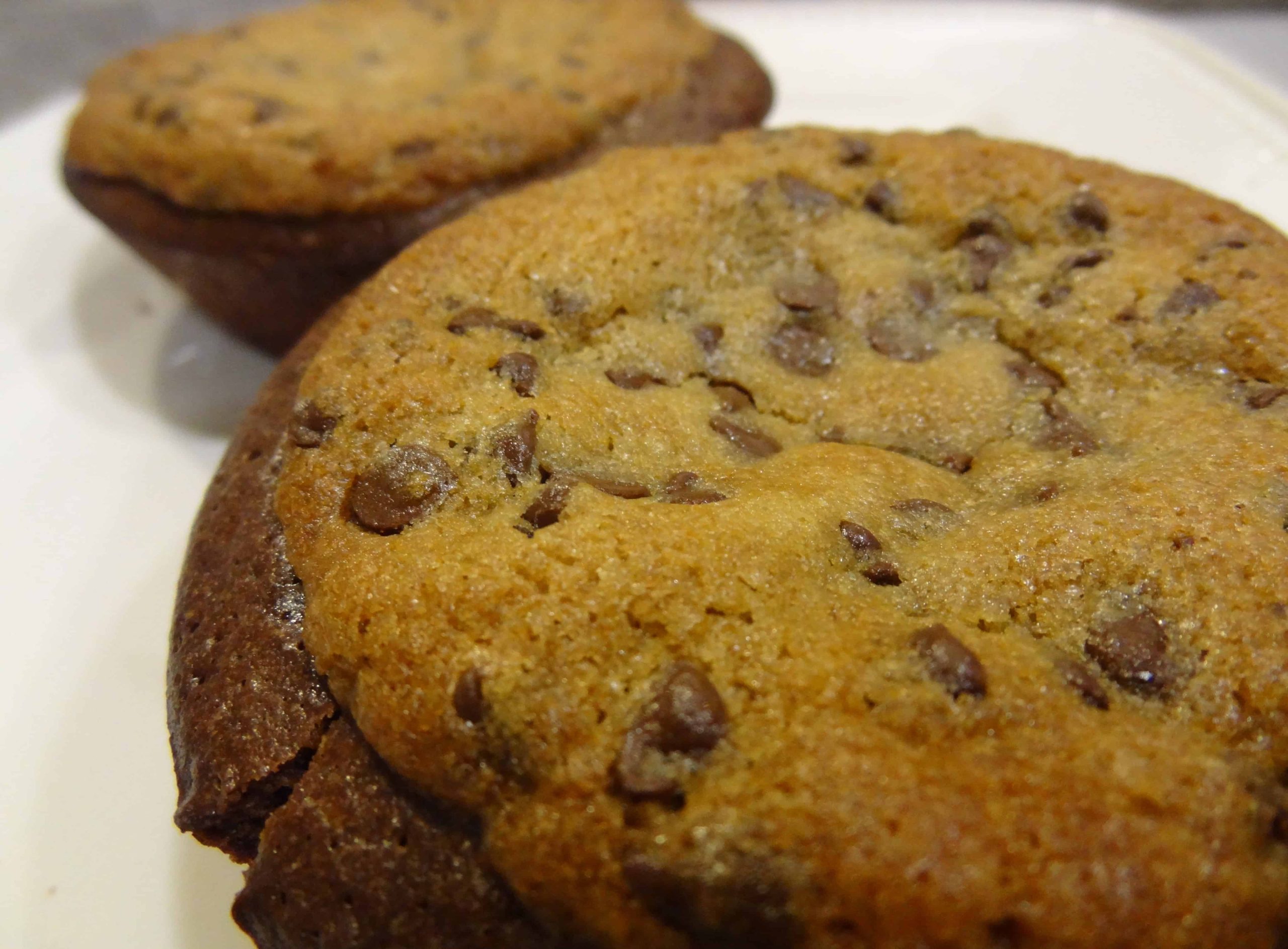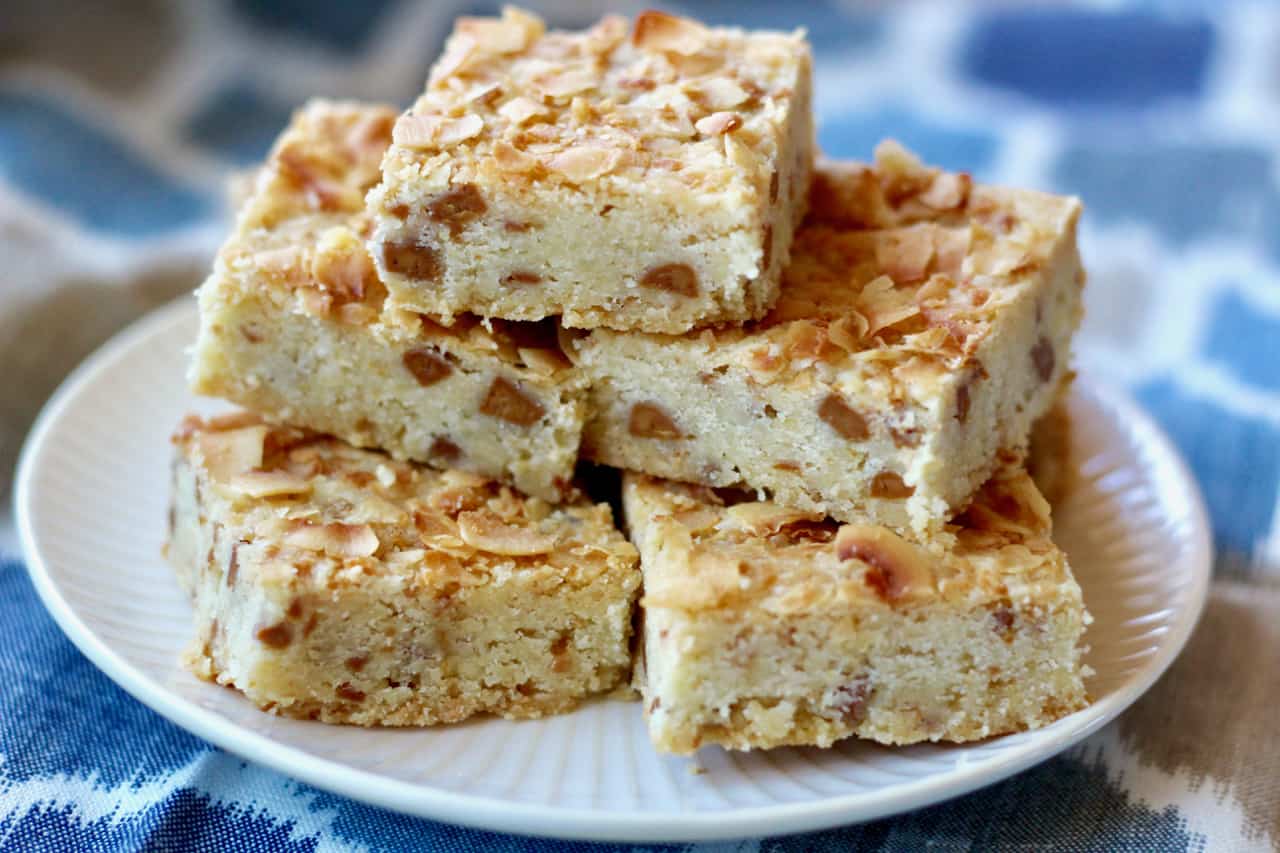
If you happened to ask Santa for blonde chocolate, today is your lucky day. The first time I tried Dulcey, the caramelized white chocolate made by Valrhona, I felt what I can only describe as a religious experience, and I can’t be sure, but I think I heard little angels singing somewhere in the distance. It tastes… golden. For baking, you can use it almost anywhere that you would use white chocolate, and it lends so much more flavor, depth, and warmth. If you haven’t tried it yet, you are in for a chocolate revolution; if you have, then you know exactly what I mean. The only drawback is that Dulcey costs a pretty penny, so I use it sparingly. There’s also the new Orelys, which has flavor notes of muscovado sugar. I didn’t care for the taste of the raw fèves, but when melted, I thought it was pretty similar to Dulcey, which is to say, utterly lovely. For these Blonde Chocolate Coconut Shortbread Bars, I used Dulcey, but you can use either one, or you can roast your own white chocolate.
Now, you might think I’m throwing around the word ‘shortbread’ all willy-nilly, but let me assure you that I don’t take shortbread lightly; the delicate balance of flour, sugar, and butter that produces just the right shortbread texture consumes my attention proooobably a lot more than the average person. These are made using the basic Buttery Shortbread recipe from Ovenly, which I quickly consecrated to my shortlist of favorite and most versatile recipes when I first tried it. Thus far, I’ve posted two variations: Chocolate Chip Toffee and White Chocolate Birthday, and I knew that I wanted to make one specifically with Dulcey, since it positively sings when paired with butter. But I wanted something else… another warm, toasty flavor that would both stand out and complement those qualities of the Dulcey. Enter: coconut. These two were made for each other, and I now have designs on all sorts of blonde chocolate/coconut creations…
A few recipe notes:
- The butter temperature is very important– make sure your butter is very cold (straight from the fridge to the mixer bowl), as this will affect the texture of your baked bars.
- Use the best butter that you can afford, since butter is the starring flavor in shortbread. I use Irish Kerrygold unsalted butter, which is a cultured European-style butter with higher fat content (i.e. higher deliciousness) than American sweet cream butter.
- More on shortbread texture here and here— feel free to adapt the baking temperature and pan size similarly in this recipe to meet your own preferences.
One thing I love about this shortbread is how dead-simple it is to make. It is such a payoff, given how quickly they come together. And normally I’m pretty careful about flattening out the top after pressing the dough into the pan– that is honestly the part that takes the longest– but in this particular case, the top gets covered in coconut flakes, so it’s not even essential to spend a lot of time on that step. I hope you enjoy these— they are lovely during the holidays as well as any time of year.
Blonde Chocolate Coconut Shortbread Bars
Adapted from Ovenly: Sweet & Salty Recipes from New York’s Most Creative Bakery by Erin Patinkin & Agatha Kulaga
Yields 24 squares
- 1 cup (60g) unsweetened coconut flakes, divided
- 4 cups (480g) all-purpose flour
- ⅔ cup (120g) blonde chocolate, such as Valrhona Dulcey or homemade, chopped
- 4 teaspoons kosher salt
- 18 ounces (4½ sticks/508g/36 tablespoons) cold unsalted butter, preferably cultured European-style, cut into cubes
- 1 cup (200g) granulated sugar
Preheat an oven to 300°F and place a rack in the center position. Line a 9×13″ metal baking pan with parchment paper so that it hangs over on all sides.
Toast ½ cup (30g) of the coconut flakes and let them cool completely. Finely grind the coconut in a small food processor; the texture will be somewhat sticky and clumpy. Put the ground coconut, flour, salt, and chopped blonde chocolate in a medium mixing bowl and whisk them together evenly.
Place the cold butter pieces and sugar in the bowl of a stand mixer fitted with the paddle attachment. Beat on medium-low for several seconds, then turn up the speed to medium and mix until the sugar is incorporated, but the butter is not whipped; you want it to be barely fluffy. It may get clumpy on the beater paddle since the butter is not softened, in which case stop the mixer and scrape it down as needed. Active mixing time should be about 2 minutes.
Add half of the flour mixture and mix on the lowest speed until most of the dry ingredients have been absorbed, then add the second half and mix. If you have loose bits of the dry ingredients on the bottom of the bowl, keep mixing for a few extra seconds until they get picked up, though be careful not to overbeat. Alternatively, remove the bowl from the mixer and fold the loose bits up from the bottom to the top with a rubber spatula. Put the bowl back on the mixer and beat on low for a few seconds until all the dry ingredients have been incorporated; do not overmix. You can also do this by hand.
The dough should be cool to the touch and quite stiff. Transfer it to the prepared baking pan in a big mound, then gently flatten it with your fingers and spread it evenly to the edges and corners. It does get sticky, so you can put on food-prep gloves to keep it from sticking to your hands, or you can fold up a piece of parchment or wax paper and use that to press down on the dough.
Place the pan in the fridge for about an hour, or until the dough firms up. Scatter the remaining ½ cup (30g) raw coconut flakes over the top of the chilled shortbread dough. Spread them out to cover the entire top of the shortbread and press them lightly into the dough, then transfer the pan to the oven and bake for 45 minutes, rotating the pan halfway through. The butter will still be bubbling. Increase the oven temperature to 325°F and continue baking for another 20-25 minutes. If the coconut browns too quickly, tent the pan loosely with aluminum foil (mine was just the right amount of golden without having to do this).
Set the pan over a metal cooling rack and let the shortbread cool completely in the pan. Pull the shortbread up and out of the pan using the overhanging parchment paper.
Cut the shortbread into squares, triangles, or any shape you like– you can even use a sturdy cookie cutter to cut out shapes (and feast on the scraps). Store the shortbread in an airtight container for up to a few weeks, or freeze for up to a few months.
© Dafna Adler & Stellina Sweets, 2017.
SaveSave





